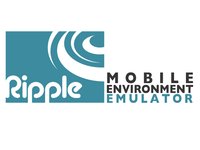Ripple - a browser emulator for testing mobile platforms
 All those who are engaged in the mobile web, are sure to face the problem of testing on various platforms. On the one hand, it is necessary to test on real devices, on the other hand, many companies cannot quickly assemble a fleet of necessary devices. Today I would like to write about a browser emulator for testing mobile platforms called Ripple Emulator .
All those who are engaged in the mobile web, are sure to face the problem of testing on various platforms. On the one hand, it is necessary to test on real devices, on the other hand, many companies cannot quickly assemble a fleet of necessary devices. Today I would like to write about a browser emulator for testing mobile platforms called Ripple Emulator .Installation
The main advantage of this emulator is ease of installation, because it is enough to install Google Chrome, install this plugin and start working. After installation, do enable for this plugin and start your application with the following addition " ? Enableripple = true ".
Overview
The Ripple interface consists of a series of panels and a central display, where the application is displayed. These panels contain tools that allow you to get information about the settings and change them. And through the central display you can interact with the application.

Panels can be collapsed and expanded by clicking on the desired icon, or you can generally remove the tab containing the panels. The panels can also be reordered, depending on their own needs.
First start

When you first start Ripple, either after installation or for the selected domain, a window will appear in front of the user asking you to select a platform for testing. No other settings for the first run are required.
Important: when running the Ripple demo, it is recommended to select the JIL platform.
')
OMGWTFBBQ

If something goes wrong and Ripple hangs, you can see a screen called OMGWTFBBQ. This screen will offer to either wait for the application to load, or start panicking and, as the developers say
It will give you a chance to rebuild :).
Information panel

The dashboard displays general information about the application, platform, and device.
Platform Selection Panel

This panel provides a choice of device that should be emulated. The following platforms are currently available:
Platforms
- BlackBerry WebWorks (2.0.0)
- JIL (1.2.x)
- Opera (4.0)
- Web
- PhoneGap (0.9.1)
- Vodafone 360
Devices
- Generic Resolutions (480x320, 800x480, 320x240, 200x240)
- BlackBerry Bold 9700, BlackBerry Torch 9800, BlackBerry PlayBook
- HTC G1, Legend, Tattoo
- Nexus one
- Sony Ericsson Xperia X10 (All Variants)
- Samsung H1, M1
- Nokia E85, N96, N97 / 5800
- iPhone / iPod Touch (all models)
To change the device / platform, you need to select a new one and press the Go! Button.
Accelerometer

This panel allows you to emulate custom movement in space and set values for the accelerometer. The movement speed is set in m / s, and the position of the device can be set simply by rotating the device. A double click will reset to 0.
The Shake button will emulate shaking the device.
File system

This panel allows you to work with the local file system as if from a FS of a mobile device.
Multimedia

Here you can control the multimedia settings, although they are only one thing - the volume of the sound =)
Storage

In this panel, you can view all the stored data by key / value. Read-only values will be highlighted separately. It is possible to erase all entries.
Network and hardware settings


In this panel, you can change the values of parameters such as RAM, battery charge, and more. You can also turn on / off the network to track the reaction of the device.
Geolocation

Here you can view and change the geolocation data.
Developments

This panel allows you to emulate various events (eg: onWakeup, onFocus) and run them to check the application's reaction to them.
Configs

The config panel contains information about the application.
Telephone panel

This panel allows you to emulate phone calls. All "calls" are saved and available for viewing.
The creators made a visual demo, available on the link .
Source: https://habr.com/ru/post/119103/
All Articles